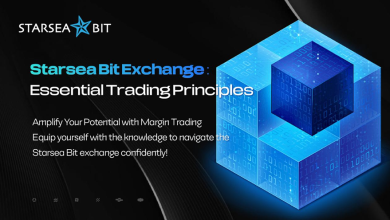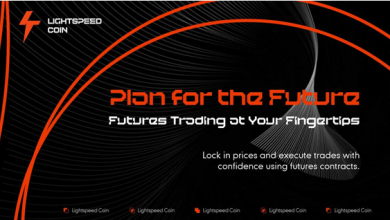A Comprehensive Guide to Crypto-Asset and DLT Market Compliance

The rapid growth of crypto-assets and distributed ledger technology (DLT) markets has prompted regulators around the world to introduce robust frameworks designed to protect investors, preserve market integrity, and foster innovation. Navigating this complex landscape can be challenging for issuers, intermediaries, and service providers. This guide provides clear explanations, professional insights, and unbiased guidance to help stakeholders achieve and maintain compliance.
Understanding the Regulatory Landscape
The Objectives of Crypto-Asset and DLT Regulation
Regulatory authorities seek to balance two core objectives:
- Investor Protection
Safeguarding end-users from fraud, market abuse, and operational failures. - Market Integrity and Financial Stability
Ensuring orderly trading, preventing systemic risks, and encouraging fair competition.
Key Regulatory Frameworks in the EU
- MiCA (Markets in Crypto-Assets Regulation)
Establishes uniform rules for issuance, trading, custody, and provision of crypto-asset services. - DLT Pilot Regime
Provides a safe-harbor framework for market infrastructures using DLT for trading and settlement. - AML/CTF Directives
Requires customer due diligence, transaction monitoring, and reporting of suspicious activities.
Core Principles for Effective Compliance
Plain-Language Explanations
Complex legal texts must be translated into straightforward policies and procedures that all staff can understand and follow.
- Use clear definitions for technical terms.
- Provide concise summaries of each regulation’s requirements.
Professional Insights
Leverage the expertise of compliance professionals, legal advisors, and industry specialists to interpret evolving rules and apply best practices.
- Conduct workshops and roundtables with regulators and practitioners.
- Monitor industry publications and case studies for emerging trends.
Unbiased Guidance
Adopt an objective approach to compliance that prioritizes regulatory intent over commercial interests.
- Maintain an independent compliance function.
- Document the rationale behind key policy decisions.
Navigating the Compliance Journey
Sharing Knowledge Within Your Organization
Building a culture of compliance starts with knowledge transfer:
- Develop a central repository of regulatory materials and FAQs.
- Assign “compliance champions” in each business unit to disseminate updates.
Achieving Alignment and Consistency
Uniform application of rules reduces confusion and operational risk:
- Establish cross-functional working groups (legal, compliance, IT, operations).
- Use standardized templates for policies, procedures, and training materials.
Eliminating Confusion Through Clear Procedures
Ambiguities can lead to breaches and enforcement actions:
- Map out end-to-end processes for critical activities such as token issuance, custody, and settlement.
- Define escalation paths for compliance queries and incidents.
Building Your Compliance Framework
Conducting a Comprehensive Compliance Assessment
- Gap Analysis
Compare current practices against regulatory requirements (MiCA, DLT Pilot Regime, AML/CTF). - Risk Scoring
Evaluate the likelihood and impact of non-compliance in each business area. - Roadmap Development
Prioritize remediation efforts and set clear milestones.
Developing Policies and Procedures
Ensure each policy includes the following elements:
- Scope and Purpose
Clearly articulate why the policy exists and whom it applies to. - Roles and Responsibilities
Identify owners, approvers, and execution teams. - Detailed Processes
Step-by-step instructions for compliance tasks. - Monitoring and Reporting
Key performance indicators (KPIs) and reporting lines.
Training and Communication
Sustained compliance depends on continuous education:
- Roll out mandatory training modules for all employees.
- Use case studies and real-world examples to illustrate policy application.
- Schedule regular refresher sessions and bulletins.
Monitoring, Reporting, and Continuous Improvement
Ongoing Oversight and Internal Controls
- Implement automated monitoring tools for transaction surveillance and system integrity checks.
- Perform periodic internal audits and tabletop exercises to validate controls.
External Reporting Obligations
- Submit required notifications and reports to competent authorities (e.g., trade repositories, AML supervisors).
- Maintain audit-ready documentation for inspections and inquiries.
Continuous Feedback Loops
- Gather input from front-line staff on policy effectiveness and practical challenges.
- Update your compliance framework to reflect regulatory changes and operational learnings.
Leveraging Additional Resources
Subscribing for Regular Updates
Stay informed about regulatory developments and industry best practices by subscribing to trusted newsletters and regulatory authority feeds.
Exploring Expert-Authored Blog Articles
- Classification, Stablecoins, and Traditional Intermediation
Deep dive into asset categorization and evolving intermediary models. - Detailed MiCA Regulation Summaries
Clear breakdowns of MiCA’s provisions for issuers, CASPs, and token holders.
Each article offers further professional insights and practical guidance to complement your compliance efforts.
Conclusion
Compliance in the crypto-asset and DLT space demands a structured, transparent, and adaptive approach. By embracing plain-language policies, leveraging expert insights, and fostering a culture of shared responsibility, organizations can transform regulatory obligations into a competitive advantage. Use this guide as your roadmap to build a resilient compliance framework that supports sustainable growth and market confidence.








